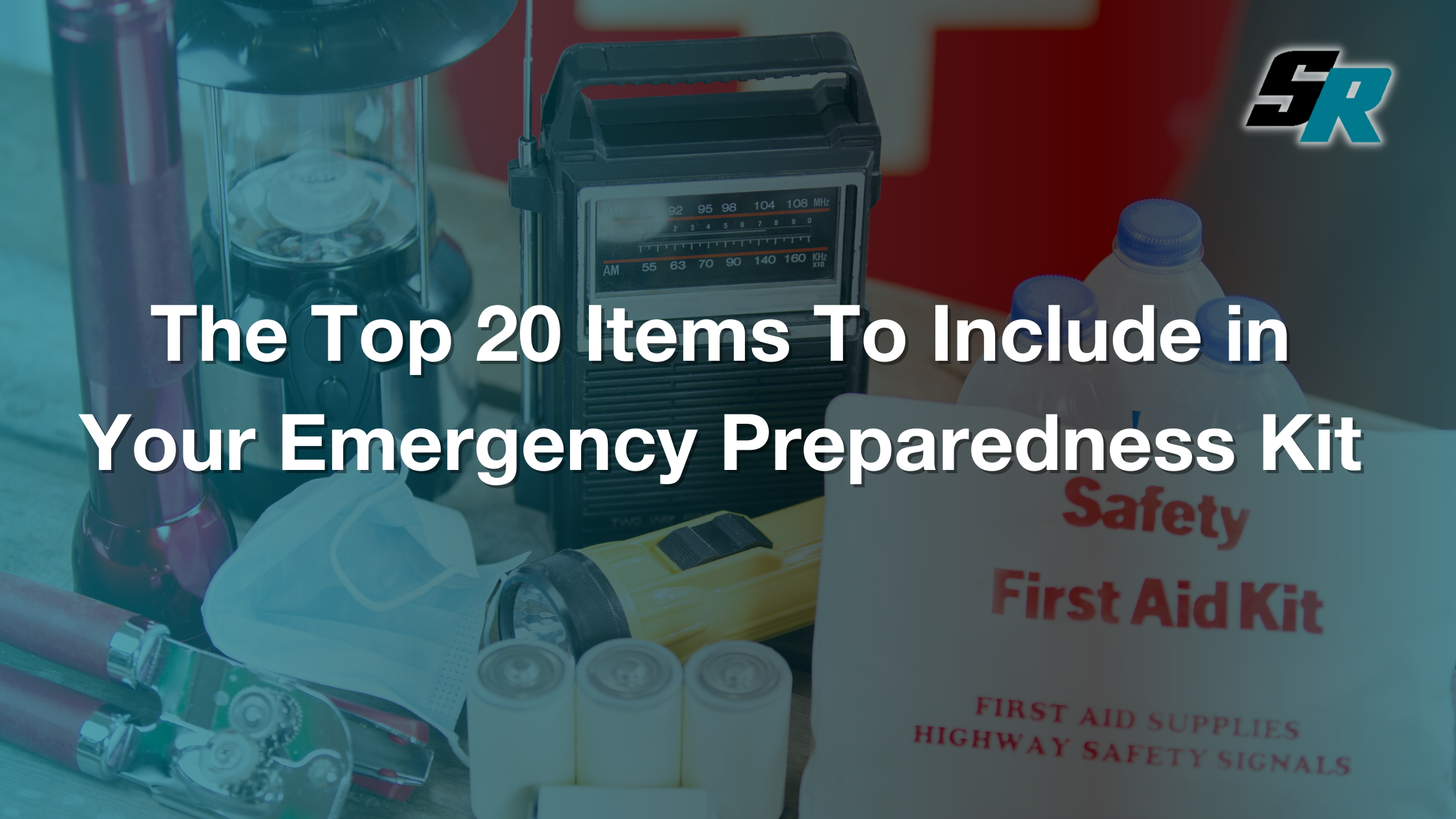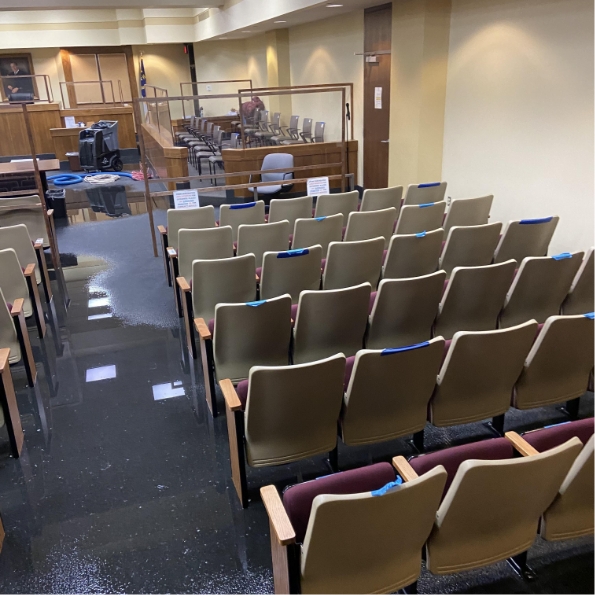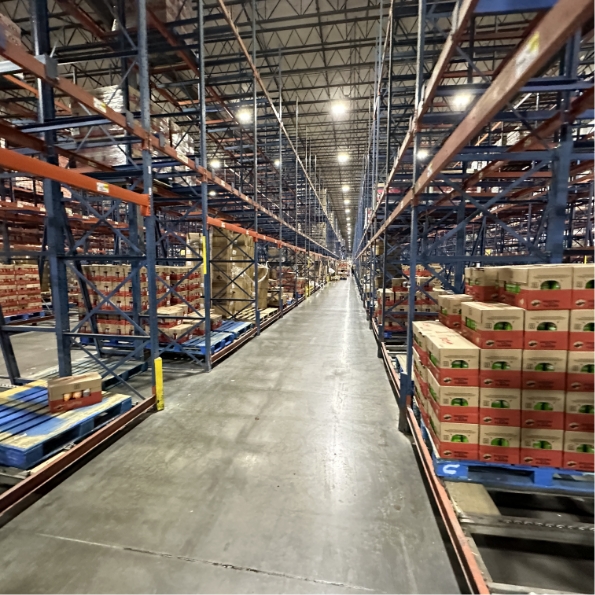The Top 20 Items to Include in Your Emergency Preparedness Kit

September is recognized as National Preparedness Month, and one way to be prepared when disaster strikes is to have an emergency preparedness kit filled with essentials to keep you and your family safe.
If you’re wondering what you should include in this kit, our team has done the research for you and found the supplies you will need to stay safe in case of a natural disaster emergency.
These items have been compiled from the following sources: FEMA, the American Red Cross, and Ready.gov
What to Put Inside Your Emergency Preparedness Kit
- Water
Perhaps the most important item on the list— water. It is recommended to have one gallon of water per person, per day. The best practice is to keep a 3-day supply for evacuation and a 2-week supply for sheltering at home.
- Food
In your emergency preparedness kit, you should have non-perishable and easy-to-prepare food items on hand. Some recommendations include ready-to-eat canned meats, fruits and vegetables, protein bars, dried fruit, peanut butter, canned juices, and other high-energy foods.
- Cell Phone with Chargers
Cell phones are a literal lifeline when a disaster strikes. Keeping your cell phone close at hand along with a portable charger and/or wall charger will help you call for help, let others know your whereabouts and stay informed with the latest storm updates.
If your phone dies and you have no way to recharge it, a battery-powered radio may be the next best option to stay informed and stay safe.
Hurricanes, severe storms, tornadoes and other natural disasters can cause power outages for days or even weeks. Battery-powered flashlights will help you get through these dark moments.
You never know what may happen during an emergency situation which is why keeping a first aid kit stocked with bandages, ointments and other medical supplies is crucial.
- Sanitation & Personal Hygiene Items
Think of all of the personal hygiene items you use on a daily basis. From toothbrushes and toothpaste to deodorant and soap, hand sanitizer and other hygiene products— packing travel-sized items in your emergency preparedness kit will help you to stay clean and safe.
- Prescription and Non-Prescription Medications
Be sure to pack prescription and non-prescription medications (i.e. Tylenol, antacids, antihistamines, anti-diarrhea, and others) in your emergency preparedness kit.
- Important Documents
Keep a copy of important documents like passports, birth certificates, social security cards, insurance policies, property records, medical information and financial records in your emergency preparedness kit. Having these items on hand will help to prove who you are and losing these items in an emergency situation can cause even more of a strain.
- Family & Emergency Contact Information
Keeping a laminated copy of your family and emergency contact information is important so first responders can contact your loved ones in case of an emergency. This is also critical in case your family gets separated during an emergency situation.
In the middle of an emergency situation, you may find yourself sleeping on the ground and it’s beneficial to have an emergency sleeping bag and blanket to keep you warm, dry and safe.
- Appropriate Change of Clothing
Keep an extra set of warm clothes in your emergency preparedness kit so that if you get wet, torn or ruined, you will have a comfortable change of clothes on hand.
- Cash and/or Traveler’s Checks
It’s important to access your funds in case of an emergency, but you don’t know how long the power will be out and credit card machines will be down. Having cash and checks on hand will ensure you are still able to purchase supplies when needed.
Whether your flashlight, radio or another device runs on batteries, it’s important to have extras on hand. Pro Tip: Keep a variety of battery sizes on hand so that you are always prepared.
Fire can be the difference between life and death in an emergency situation. Matches are lightweight, easy to use and store, cheap and a reliable way to start a fire. Be sure to keep them dry in a waterproof container so that they are viable when the time comes.
Having canned food on hand won’t matter if you aren’t able to open it. Keep a manual can opener in your emergency preparedness kit so that you can safely open your canned foods.
- Moist Towelettes, Garbage Bags, and Plastic Ties
Moist towelettes, garbage bags and plastic ties are essential for personal sanitation. Keep these on hand so that you can stay clean and keep the area sanitary.
You never know what kind of situation you will be in, and a multi-purpose tool can come in handy for turning off utilities, boarding up walls, cutting, and a variety of other scenarios.
- Local Maps
GPS is down, it’s time to open up a map. Keeping a local map on hand will help you get to safety and can also come in handy if your family gets separated for any reason.
- Books, Games, Puzzles or Other Activities
Pack a copy of your favorite book, grab a deck of cards, find a sudoku, wordsearch or crossword puzzle book and pack these in your emergency kit. These items won’t necessarily keep you safe in case of a disaster but they can help pass the time and be a source of entertainment for kids and adults alike.
I’ve Packed My Emergency Preparedness Kit… Now What?
Packing your emergency preparedness kit is step one, the next steps are storing it and maintaining it. It’s best to store your kit in a designated place that you, or any member of your family, could easily and quickly reach in case of an emergency. It is best practice to periodically check on your kit and replace any expired food or other materials that are now outdated. Be sure to update your family’s kit as needs change, i.e. do you need to include baby formula, diapers, new medications, dog food, new documents, etc?
Sasser Restoration has been called on to face disasters from coast to coast, and we specialize in helping people prepare for and recover from emergency situations. If you are looking to create an emergency preparedness plan for your business that is more extensive than an emergency-preparedness kit, give our team a call today.
Contact a Sasser Professional


